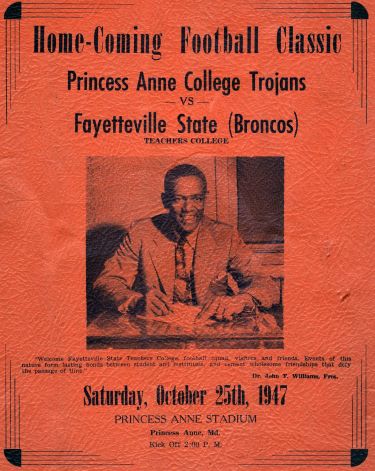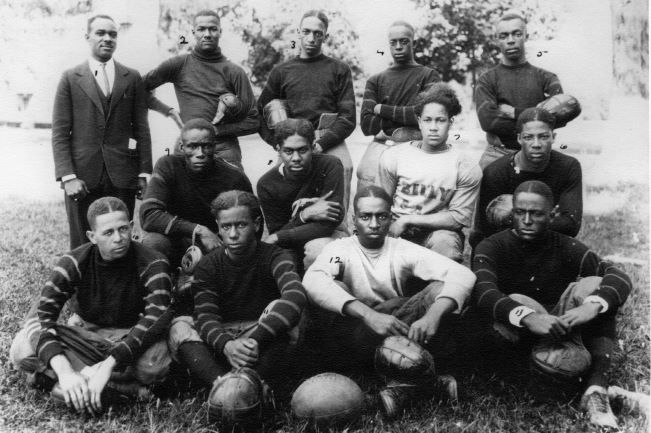
The history of football at Maryland State College is well documented throughout the annals of Black college football. Following World War II, the Hawks marched through any and all competition and into the national spotlight by consistently defeating the era’s top teams.
Their success was so quick the press dubbed them the “Raiders” from the Eastern Shore. What is less known is that the rise of the Hawks was from the ashes of the Trojans, the original nickname used by the Princess Anne Academy / College football teams that took to the gridiron in the first half of the 20th century.
The epicenter of Black college football at the dawn of the 20th century was the mid-Atlantic region with schools such as Howard and Morgan at the vanguard. Given this, it is no surprise the fervor for football on the western side of the Chesapeake Bay would find its way to the small school in Somerset County.
There is evidence as early as 1903 football was played as an intramural sport at the academy, which at the time offered high school level instruction. By the Roaring ’20s, the sport was in full swing with annual interscholastic contests against Cambridge High School, Bowie Normal, Cheyney Teachers College, Bordentown (N.J.) Industrial School and others.

Seated: Rhea Lomax, William Villines, — Moore & Jack Graves
Kneeling: Theodore Beatty, Carl White, Buddy Gibson & William Lemuel Lyght
Standing: Charles Edward Clark, Linwood Hubbard, Chester Taliaferro, Basil R. Frazier & Brewington Kiah
Princess Anne Academy was a powerhouse of the Scholastic Athletic Association by the end of the 1920s. Under the tutelage of former Hampton (Va.) Institute star Samuel G. Mansfield, the “Kiah Boys,” a trio that included two sons and a cousin of Principal Thomas Kiah, ran roughshod over conference members. Upon graduation, Calvin Kiah, a quarterback, and his brother, Waldo, an end, went played at Morgan and led the Baltimore school to a CIAA championship in 1931.
In the early 1930s, Princess Anne Academy joined other long-time rivals to form the Mid-Atlantic Athletic Association, more commonly known as the “M3A.” But as the Great Depression gripped America, the fortunes of the academy’s football team mirrored that of the country.
Throughout that decade, teams from Princess Anne were routinely beaten by Bordentown, Cheyney, Delaware State and other conference stalwarts. This trend continued after the 1939 dissolution of the M3A and into the early 1940’s.
When the country was drawn into World War II, many colleges abandoned football because of a lack of manpower. Princess Anne College was no exception.
With the cancellation of the 1942 season opener against Delaware State, the early period of football in Princess Anne ended. With such a dismal record entering the war years, it is no surprise the soaring post-war success of the rechristened “Hawks” rocked the football world – and forever changed the face of Black college football.

